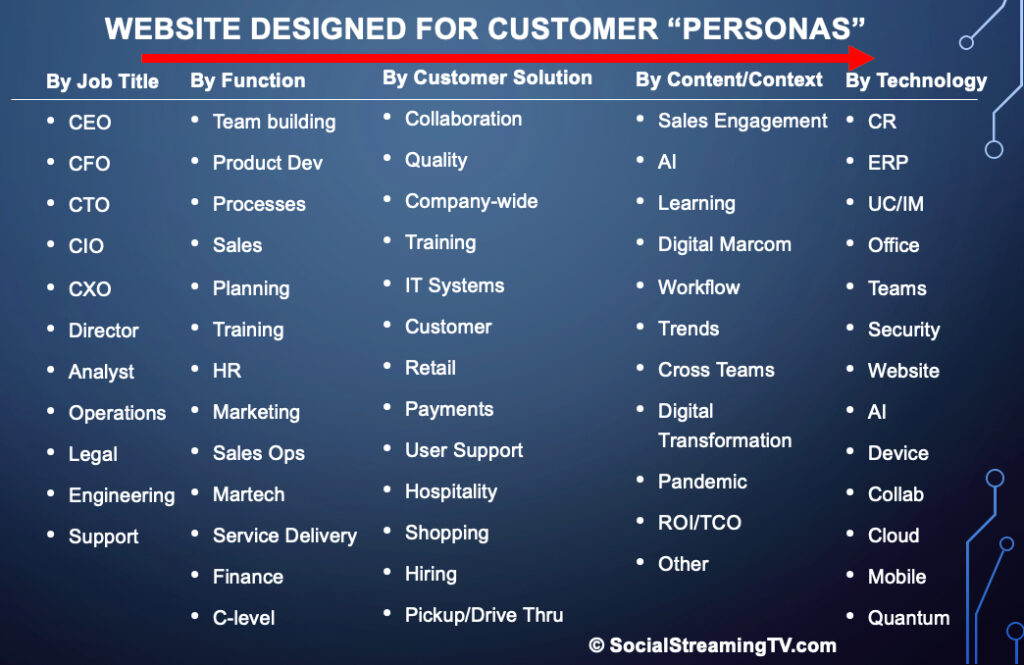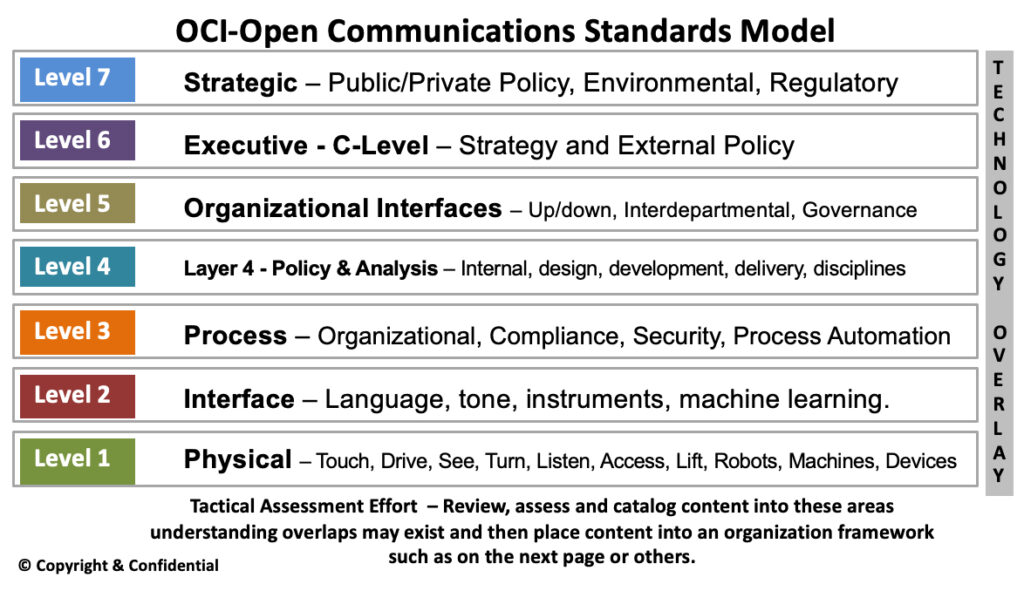Please STOP Building Websites & Content for Products, Build Content …
By Thomas B. Cross CEO SocialStreamingTV.com
based on what customers want and need to buy, not what you sell. The longer it takes you to do this, the longer the sales cycle will be. Specifically, build content for the “viewer” to see the world as they do. That is, write content as if it was “you” doing their job. Create content as if you are an IT manager, CIO, CISO, CFO, CEO etc. Indeed, this is hard work but the longer you wait the longer the sales cycle as each person involved in their decision to buy, use, support and dispose of your product solution has different needs. The CEO wants to know what the impact will be in EPS-earning per share, the CFO needs to understand in business terms such as ROI/TCO plus what the initial, ongoing and termination costs will be. Somewhere in the “mix” is the legal department which are even more clueless about what all these technologies mean but are faced with results from their use or misuse from compliance violations. Yes, there is also the impact on the business from new regulations such as ESG, GDPR, privacy, concepts like CPO-Chief Privacy Officer being required for “all” companies in Brazil. The CIO has to translate all the technobabble from the vendor and IT manager what all the acronyms from 2FA, XDR, SIEM, MACD, IoT, compliance, risk and other concept really mean in “child-like” terms to create presentations to the CFO, CEO and even the board (who aren’t really interested but sit on committees).
This is a nice landing but wrong airport. Another common mistake is that the person who fills out your needless lead generation form to download your white paper is the decision-maker. Many of them are not even on the committee. They may take notes or advise one of the decision-makers, but their job is often as an “analyst” is to gather and analyze information into a report.
This does not mean you can ignore them. Quite the contrary you need to organize the same content for all the C-levels (even those you may not think so) involved for the analyst to help them figure out what you do. If all you do is throw more technology at analysts, your solution may find itself in the trash bin, but you finish reading this sentence. There is much more to this issue than this short presentation, if you are interested, however here is a good start.

Design the website content not by technology but by personas.
• Start with a Job Title which provides both the marketing person, technical SME-subject matter expert and others guidance on what and how they need to provide the information. For example, the CEO is not interested in “how to” operate it but whether it will cause the collapse of the company. The CFO wants to know the ROI, TCO, value prop, KPI and other factors, etc. That means you write and design the content for each persona.
• Then by Function as the solution may be used in one department or across many departments. That is, most applications work across departments or even companywide. This means that “buy-in” is needed for every “touch point” otherwise users won’t use it and worse could have a catastrophic impact on the company. Cyber attackers even rely on angry users often used to help them in gaining access.
• Then by Customer Solution, this is not your solution but how your solution will be used by the company in their own customer solutions (if applicable) or how is your product a “must have” to help them gain and retain their customers. You can and should build content for markets such as fintech, healthcare, hospitality, etc. but keep in mind you still need content for the decision maker.
• Then by Content/Context, this gets a little harder as you are drilling down into what are the real benefits of your solution in helping the customer in specific areas of their business. Some in here is an approach of building a “standards” approach to content.

• Finally, by Technology, as you have often seen, customers don’t want or need more technology as many say they want less of it as there are just too many moving parts that often break, ending up in finger-pointing situations with multiple vendors.
Bottom-line – content design and development is very hard and getting harder along with a key point that like fitness “it’s not one and done” as new daily “breaking news” content keeps the “bread fresh” rather than old stale boring content. Also, this gives viewers a reason to comeback. Content builders need to move from behind the “curtain” and build powerful personas and customers experiences to make the efforts worthwhile in terms of real ROI/TCO to the company rather than just “flashes in the pan” of technobabble which only really means the sales cycle will get even longer.
If you want to know more email cross@gocross.com or here for a PDF version.
